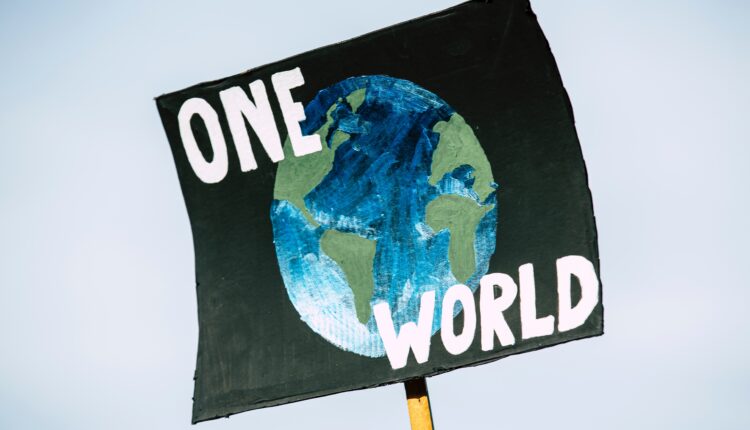As the impact of climate change gains a foothold in our daily lives, many countries have focused on mitigating global greenhouse gas (GHG) emissions through innovative and cost-effective mechanisms that scale up emissions reductions and encourage flows financial, including so-called carbon market mechanisms.
As a way to support, facilitate, and improve “readiness” for these instruments, the World Bank established a global grant-based partnership with developed and developing countries to provide financial and technical assistance for the innovation and implementation of collective pilot programs of market for the reduction of greenhouse gas emissions.
ASIA
Countries with territory in the Himalayan mountains or its foothills, including China, India, Nepal and Pakistan, could face sudden flooding events, the report said. As the ice melts, water can pool behind rocky ridges to form lakes. And when those rocks give way, water rushes down – putting downstream mountain communities at risk.

Further south, mosquitoes that can carry diseases including dengue fever and malaria are expected to spread to new parts of subtropical Asia, encouraged by warmer temperatures and heavy rains.
And hundreds of millions of people will be on the move. A World Bank report warned in September that climate impacts, including water scarcity and declining crop yields, could force some 216 million to migrate within their own countries by 2050.
AFRICA
Living on the world’s hottest continent, Africans are at especially high risk of heat stress. If global warming exceeds pre-industrial levels by more than 1.5 degrees Celsius (2.7 degrees Fahrenheit), at least 15 more people out of 100,000 would die each year from extreme heat, according to the IPCC.
Africa’s population will likely grow faster than any other during the 21st century, with many people living in coastal cities. By 2060, more than 200 million people in Africa are projected to be vulnerable to sea level rise.
Nigeria’s coastal capital, Lagos, is on track to become the world’s most populous city by 2100. Population growth across the continent could also increase resource scarcity.
CENTRAL AND SOUTH AMERICA
The Amazon rainforest and the thousands of diverse plants and animals it is home to are highly vulnerable to droughts and wildfires, made worse when farmers cut down trees for agriculture.
Droughts, storms and floods will worsen in parts of the Andes, in northeastern Brazil and in parts of Central America. Along with geopolitical and economic instability, these shocks could lead to waves of migration.
Mosquito-borne diseases like Zika, chikungunya, and dengue could make more people sick.
EUROPE
The 2019 summer heat wave offered just a glimpse of what awaits Europe if warming reaches 3 degrees Celsius. At such temperatures, cases of heat stress and heat-related death would double, if not triple, compared to 1.5°C.
Beyond 3C, “there are limits to the adaptive potential of people and existing health systems,” says the IPCC report.
Damage from coastal flooding is projected to go far beyond the sinking of Venice and increase by at least 10-fold by the end of the century.
And despite Europe’s relative wealth, current adaptation measures are falling short. Scientists project continued heat deaths, crop failures and water rationing during drought in southern Europe for decades to come.
NORTH AMERICA
Large wildfires will continue to burn forests and darken skies in the western United States and Canada, causing destruction of nature and livelihoods, and contributing to air and water pollution.
Even if global warming remains at 1.5°C, many parts of the United States will be at high risk of severe storms and hurricanes, as well as flooding from sea level rise and storm surge.
On Monday, the nation’s Fifth National Climate Assessment warned that these events would threaten “the things Americans value most,” such as safe homes, healthy families, public services and a sustainable economy. The IPCC also said that such climate impacts would disrupt global supply chains and international trade.
And in the Arctic, melting sea ice, rising temperatures and thawing permafrost will push many species to the brink of extinction. In a new report Monday, scientists predicted that summer sea ice would be completely gone by 2030.
AUSTRALASIA
Australia’s Great Barrier Reef and kelp forests will reach an adaptation limit beyond 1.5°C, experiencing irreversible changes due to marine heat waves. Tourism receipts would fall sharply, the IPCC said.
Extreme fires would challenge southern and eastern Australia and parts of New Zealand.
And as Australia’s forests dry out, alpine ash, eucalyptus forests and northern jarrah forests would largely collapse.
Contact us:
If farmers want to share information or experiences related to farming with us. Then they can do this by calling us on the phone number 9599273766. Or by writing an email to [email protected] or by sending your recording. Through Kisan of India, we will convey your message to the people. Because we believe that if the farmers are advanced then the country is happy.
You can connect with Kisan of India on Facebook, Twitter, and Whatsapp and Subscribe to our YouTube channel.



